Texas Olive (Cordia) is a stunning, drought-tolerant shrub that thrives in hot, dry conditions and adds beautiful color to your garden. Known for its hardiness and low-maintenance care, it’s an excellent choice for landscapes needing plants that can withstand the heat while providing bold blooms.
In this article, we share 14 growing tips for a drought-tolerant and beautiful Texas Olive (Cordia). From choosing the right location and watering properly to pruning and fertilizing effectively, these tips will help you cultivate a healthy, thriving Texas Olive in your garden. Whether you’re creating a desert landscape or just want a resilient, beautiful shrub, these tips will ensure success!
Choose the Right Location
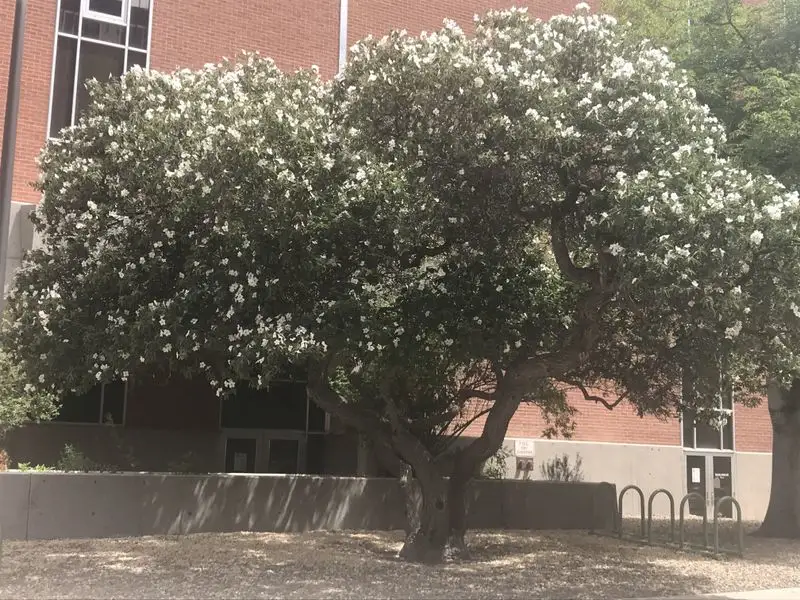
Selecting the right spot is crucial for Texas Olive success. It thrives in full sun, so ensure the chosen location receives ample sunlight throughout the day. This plant prefers well-draining soil to prevent waterlogging and root rot. Consider areas that mimic its natural Texan habitat for best results. Avoid locations prone to flooding or excessive shade. By carefully selecting a suitable site, you provide the foundation for a healthy, flourishing plant. Texas Olive will reward this thoughtful placement with vibrant growth and bountiful blooms, enhancing the beauty of your landscape.
Water Wisely
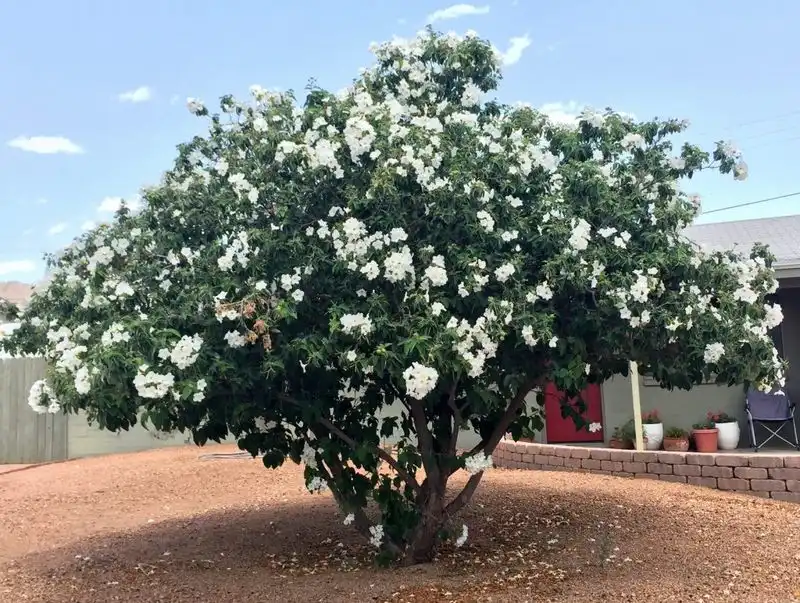
Mastering the art of watering is key to cultivating Texas Olive. While drought-tolerant, young plants need regular watering to establish roots. Opt for deep, infrequent watering to encourage strong root development. Avoid daily watering, which can lead to shallow roots and increased vulnerability to drought. Morning is the ideal time to water, minimizing evaporation and maximizing absorption. As the plant matures, reduce watering frequency, letting nature’s rainfall provide most of its needs. This approach not only conserves water but also fosters a resilient, drought-ready Texas Olive.
Soil Enrichment
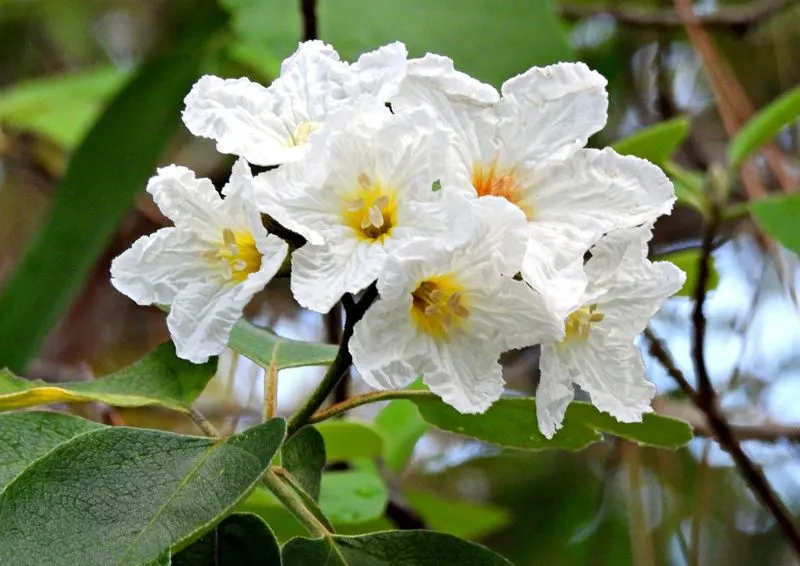
Enhancing soil quality boosts Texas Olive growth and vitality. Begin with organic matter like compost to enrich the existing soil, improving drainage and nutrient availability. This practice supports robust root development and overall plant health. Fertilizers specifically formulated for native plants can be used sparingly to provide additional nutrients, but over-fertilizing can harm the plant. Regularly assess soil texture and adjust amendments as needed. A well-nourished soil leads to a thriving Texas Olive, showcasing its signature blooms and foliage. This foundational care reaps long-term rewards.
Pruning Techniques
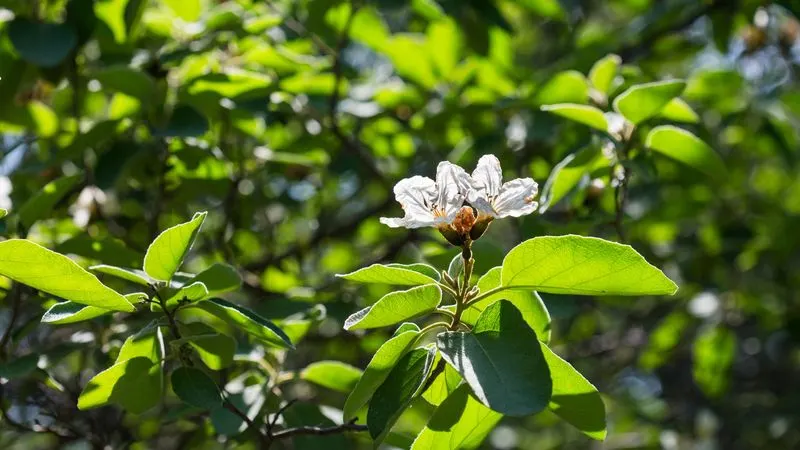
Pruning plays a vital role in maintaining Texas Olive’s shape and health. Regular pruning encourages bushier growth, removes dead or diseased branches, and enhances airflow. Use clean, sharp tools to prevent damage and disease spread. Late winter or early spring is the optimal time for major pruning, as it prepares the plant for vigorous new growth. Avoid excessive pruning during peak growing season. By mastering these techniques, you promote a robust, attractive Texas Olive. This practice not only improves aesthetics but also boosts plant resilience against pests and diseases.
Mulching Benefits
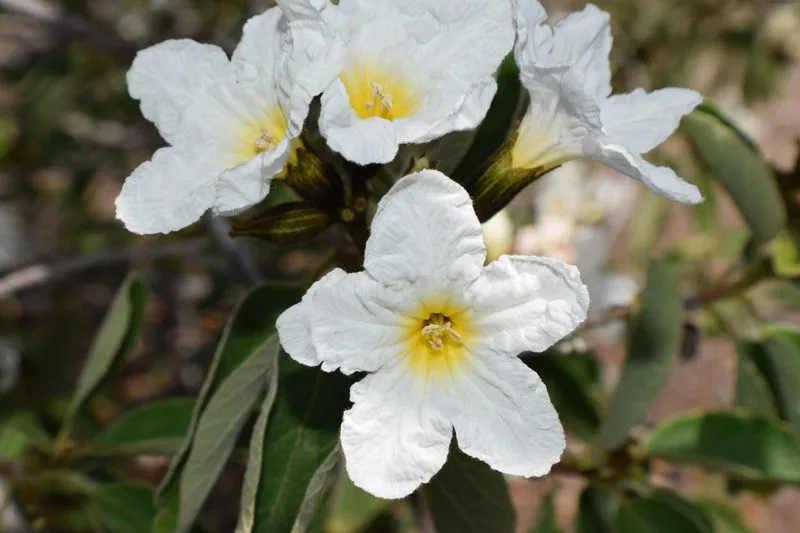
Mulching offers numerous advantages for Texas Olive. A layer of organic mulch conserves moisture, moderates soil temperature, and suppresses weed growth. Place mulch around the base, ensuring it doesn’t touch the trunk to prevent rot. This protective barrier supports consistent hydration, especially during hot, dry periods. Mulching also enriches the soil as it decomposes, providing a slow-release of nutrients. This simple yet effective practice aids in maintaining a healthy, vibrant plant. With regular mulching, your Texas Olive stands robust against challenging environmental conditions.
Pest Management
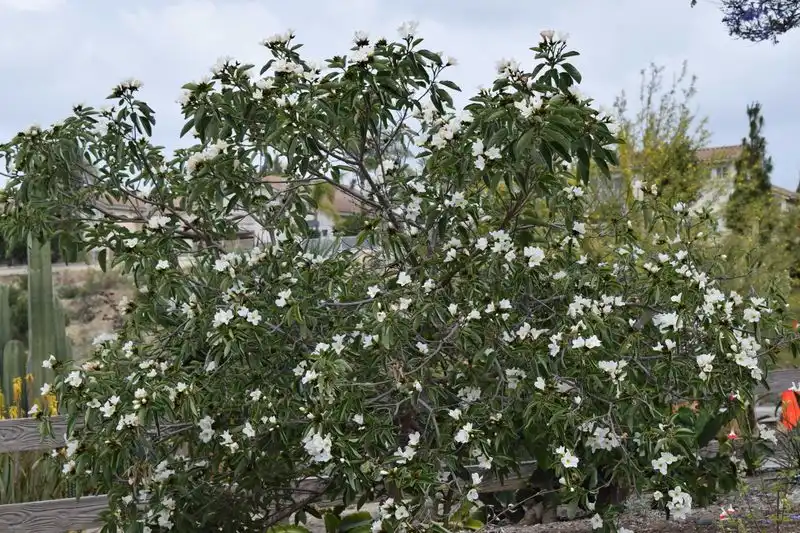
Keeping pests at bay is essential for Texas Olive’s health. Regularly inspect foliage for signs of infestation, such as discolored leaves or unusual spots. Natural predators like ladybugs can help control pests without chemicals. When intervention is necessary, choose environmentally safe insecticides or homemade remedies. Maintaining plant health through proper watering, pruning, and soil care also reduces pest susceptibility. Integrated Pest Management (IPM) strategies, combining monitoring and preventive measures, protect your Texas Olive while preserving the ecosystem. These practices ensure the plant remains vibrant and flourishing.
Weather Protection
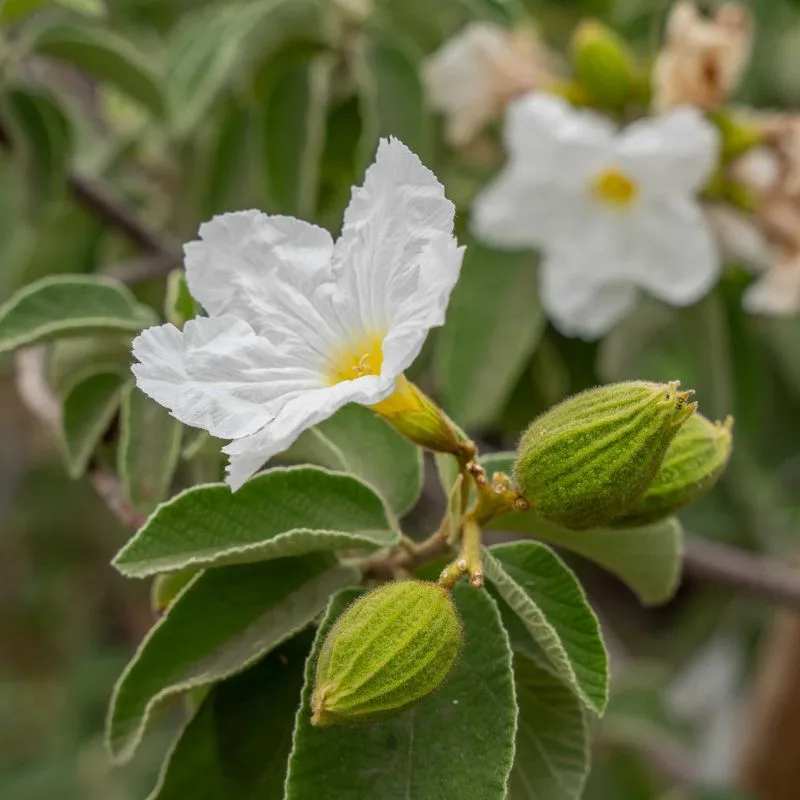
Shielding Texas Olive from extreme weather ensures its longevity. While hardy, unexpected cold snaps can damage young plants. Use frost cloths or blankets to cover trees during freezing temperatures. During scorching summers, temporary shade or windbreaks can protect against heat stress. Understanding seasonal weather patterns in your area helps preemptively plan protective measures. Proper site selection also plays a role in natural weather defense. By taking these precautions, you help your Texas Olive endure and thrive, maintaining its beauty and health throughout varying conditions.
Companion Planting
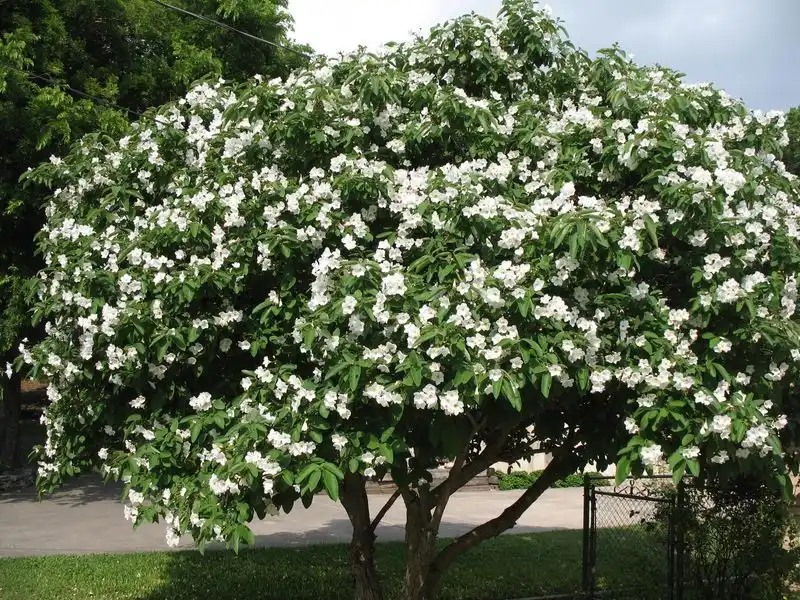
Strategic companion planting enhances Texas Olive growth. Pairing with drought-tolerant herbs like lavender or sage benefits both plants, as they share similar water and sun requirements. These companions deter pests and attract beneficial insects, creating a balanced ecosystem. Avoid planting overly competitive species that could overshadow or deplete resources. Proper spacing ensures each plant receives adequate sunlight and nutrients. This harmonious planting strategy not only boosts aesthetic appeal but also supports a thriving garden environment. Companion planting is a simple yet effective way to enhance your garden’s health.
Seasonal Fertilization
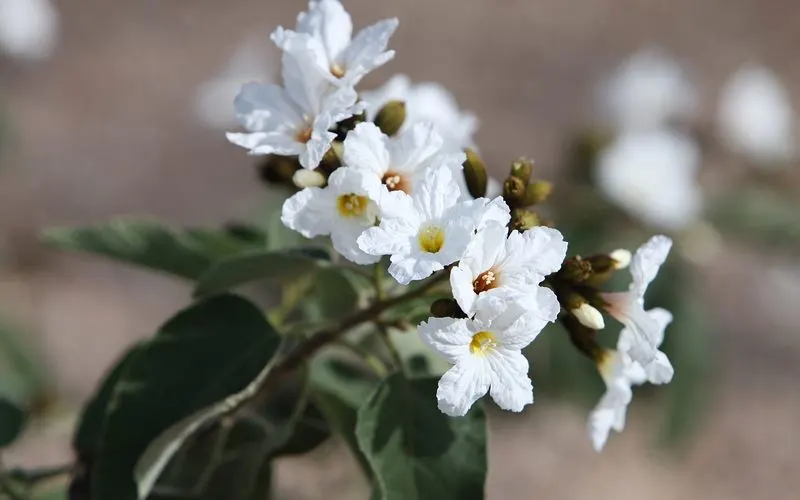
Thoughtful fertilization keeps Texas Olive healthy and vigorous. In spring, apply a slow-release fertilizer specifically designed for native plants. This timing aligns with the plant’s active growth phase, maximizing nutrient uptake. Avoid over-fertilizing, which can lead to excessive foliage at the expense of flowers. Mid-summer applications can support continued growth, but always adhere to product guidelines. Monitoring soil health and plant performance helps fine-tune fertilization practices. This targeted approach fosters a balanced ecosystem, ensuring your Texas Olive remains vibrant and productive throughout the growing season.
Root Care

Root health is paramount for robust Texas Olive growth. Avoid disturbing roots during planting and routine gardening activities. Ensure proper planting depth, with roots slightly above ground level to facilitate drainage and air circulation. Overwatering can lead to root rot, so stick to deep, infrequent watering schedules. When transplanting, handle roots gently to prevent damage. Regularly check for root-bound conditions, especially in potted plants, and repot as necessary. By prioritizing root care, you support a strong foundation for your Texas Olive, leading to a flourishing and resilient plant.
Flower Boosting
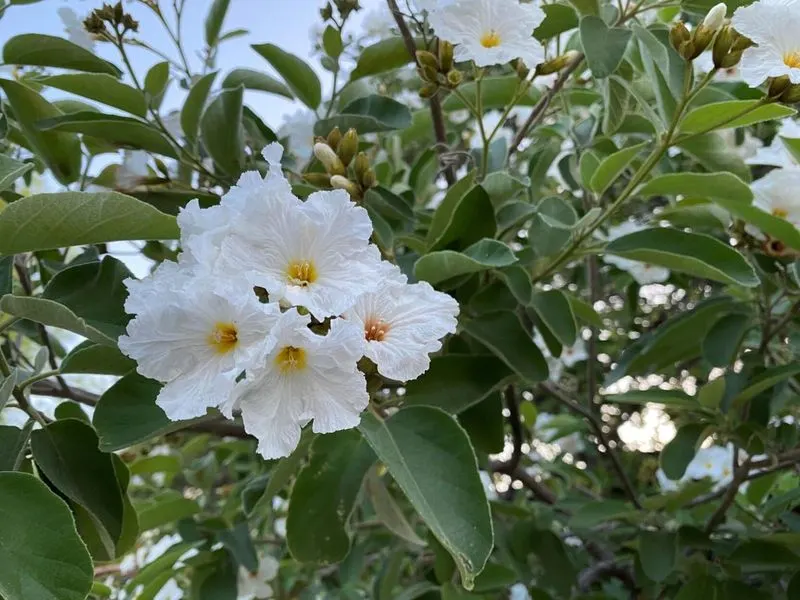
Encouraging prolific flowering in Texas Olive enhances its ornamental value. Pruning spent blooms redirects energy to new growth and flower production. Ensure the plant receives full sun, which is vital for abundant blooming. Proper fertilization supports flower development, but avoid excessive nitrogen which promotes leaf growth over flowers. Monitor watering practices, as both over and under-watering can affect bloom quantity and quality. With these mindful practices, you’ll enjoy a spectacular floral display, making your Texas Olive a standout feature in any garden setting. Embrace the beauty of its blossoms.
Native Adaptations
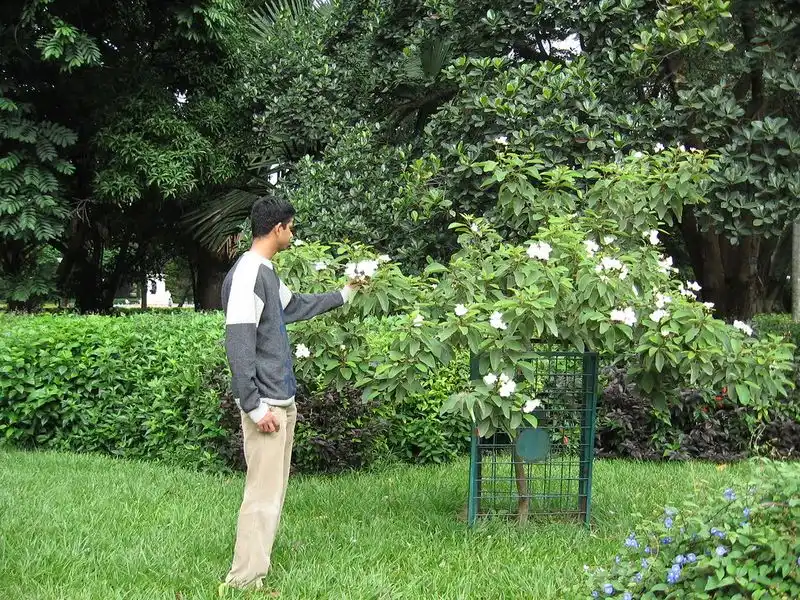
Understanding the natural adaptations of Texas Olive aids in its care. This native plant is well-suited to Texas’s arid conditions, requiring minimal intervention once established. Its deep root system efficiently taps into underground moisture, reducing dependency on regular watering. Embracing its natural growth patterns and resilience against local pests and diseases simplifies maintenance. By aligning gardening practices with its native adaptations, you support a self-sustaining plant. This approach not only conserves resources but also allows Texas Olive to showcase its inherent beauty and toughness.

